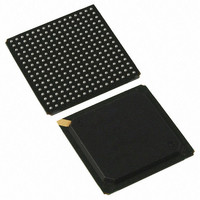PI7C9X130DNDE Pericom Semiconductor, PI7C9X130DNDE Datasheet - Page 147

PI7C9X130DNDE
Manufacturer Part Number
PI7C9X130DNDE
Description
IC PCIE-PCIX BRIDGE 1PORT 256BGA
Manufacturer
Pericom Semiconductor
Specifications of PI7C9X130DNDE
Applications
PCI-to-PCI Bridge
Interface
SMBus (2-Wire/I²C)
Voltage - Supply
1.8V, 3.3V
Package / Case
256-PBGA
Mounting Type
Surface Mount
Operating Temperature (min)
-40C
Operating Temperature Classification
Industrial
Operating Temperature (max)
85C
Package Type
BGA
Rad Hardened
No
Lead Free Status / RoHS Status
Lead free / RoHS Compliant
Available stocks
Company
Part Number
Manufacturer
Quantity
Price
Company:
Part Number:
PI7C9X130DNDE
Manufacturer:
Pericom
Quantity:
135
Company:
Part Number:
PI7C9X130DNDE
Manufacturer:
NSC
Quantity:
70
11
12
PERICOM SEMICONDUCTOR - Confidential
11.1 EEPROM (I2C) INTERFACE
11.2 SYSTEM MANAGEMENT BUS
BUS
HOT PLUG OPERATION
EEPROM (I2C) INTERFACE AND SYSTEM MANAGEMENT
PI7C9X130 supports EEPROM interface through I2C bus. In EEPROM interface, pin A2 is the
EEPROM clock (SCL) and pin A1 is the EEPROM data (SDL). When TM2 is strapped to low, TM1
selects EEPROM interface or System Management Bus. To select EEPROM (I2C) interface, TM1
needs to be set to low. When EEPROM interface is selected, SCL is an output. SCL is the I2C bus
clock to the I2C device. In addition, SDL is a bi-directional signal for sending and receiving data.
PI7C9X130 supports SM bus protocol if TM1=1 when TM2 is strapped to low. In addition, SMBCLK
(pin A2) and SMBDAT (pin A1) are utilized as the clock and data pins respectively for the SM bus.
When SM bus interface is selected, SMBCLK pin is an input for the clock of SM bus and SMBDAT pin
is an open drain buffer that requires external pull-up resistor for proper operation.
PI7C9X130 is not equipped with standard hot-plug controller (SHPC) integrated. However,
PI7C9X130 supports hot-plug signaling messages and registers to simplify the implementation of hot-
plug system.
Using PI7C9X130 on motherboard:
PI7C9X130 supports hot-plug on PCI bus if forward bridging is selected (REVRSB=0).
PI7C9X130 supports hot-plug function on PCI Express bus when reverse bridge mode is selected
(REVRSB=1).
Using PI7C9X130 on add-in card:
PI7C9X130 supports hot-plug on PCI Express bus in forward bridge mode. Hot-plug messages will be
generated by PI7C9X130 based on the add-in card conditions.
PI7C9X130 supports hot-plug function on PCI bus when reverse bridge mode is selected. PI7C9X130
will tri-state the PCI bus when RESET is asserted. Also, PI7C9X130 will de-assert INTA_L if RESET
is asserted. The state machine of PI7C9X130 PCI bus interface will remain idle if the RESET is
asserted. After RESET is de-asserted, PI7C9X130 will remain in idle state until an address phase
containing a valid address for PI7C9X130 or its downstream devices.
PI7C9X130 expects the REFCLK signal will be provided to its upstream PCI Express Port prior to the
de-assertion of RESET. The Downstream PCI Port of PI7C9X130 supports a range of frequency up to
66MHz.
Page 147 of 165
PCI EXPRESS TO PCI-X BRIDGE
Mar 2010 - Rev 2.0
PI7C9X130











